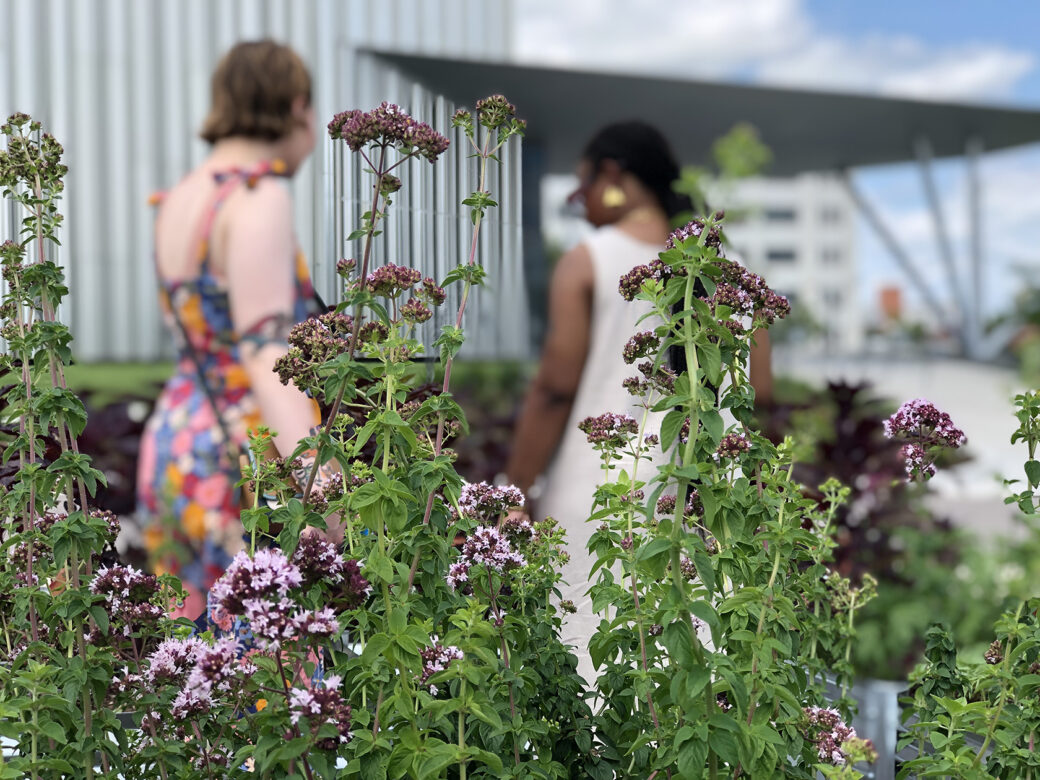
Oklahoma Contemporary's Art Garden
Supported by the Krei Family Fund
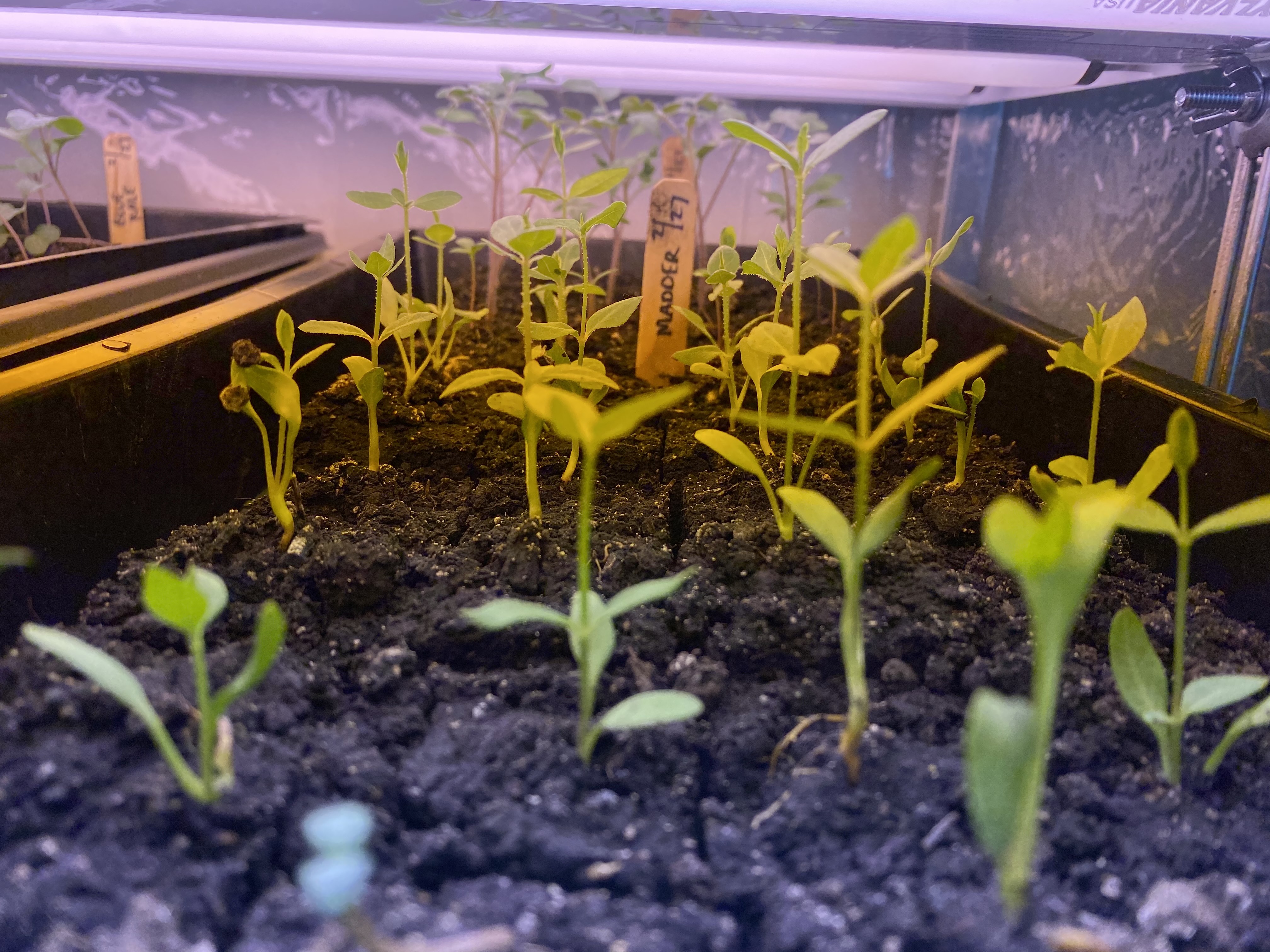
The Art Garden, planted just south of our main building, provides a space to grow and nurture plants as accessible art material. Species such as Hopi Black Sunflower and Dyers Chamomile can be dried and transformed into inks, dyes and paints. The garden serves as a haven for native species, pollinators and humans alike.
What is an art garden?
A way to grow plants to make your own paints, dyes and inks that are lower cost and much kinder to the environment.
Who uses it?
Our camps, classes, workshops and family programs use the plants and pigments made from these plants.
Inspired to plant your own art garden?
A rainbow of pigments can be yielded from plants found in your garden or in the prairies and forests of Oklahoma. Below are some of our favorite plant varieties to try in your own art garden.
We considered a plant's ability to tolerate Oklahoma’s growing conditions, the color yield, ease of sourcing the plant and if it had additional pollinator or culinary benefits.
There are many wonderful websites and books to review for a deeper dive into how to prepare your natural inks, paints or dyes: Two of our favorites are Make Ink: A Forager's Guide (Jason Logan) and The Modern Natural Dyer (Kristine Vejar).
Remember, if you want a real art garden to include some grasses, flowers and papyrus to use for paper making and as impromptu brushes.
Reds
Madder | Rubia tinctorum
Dye color: Peach to deep-wine red (roots)
Don’t touch the leaves unless you want a finger full of prickles. This plant is a rare source of a true, plant-based red. It takes two years for the color to be reaped from the roots. If cows and goats eat this plant, their milk could turn pink!
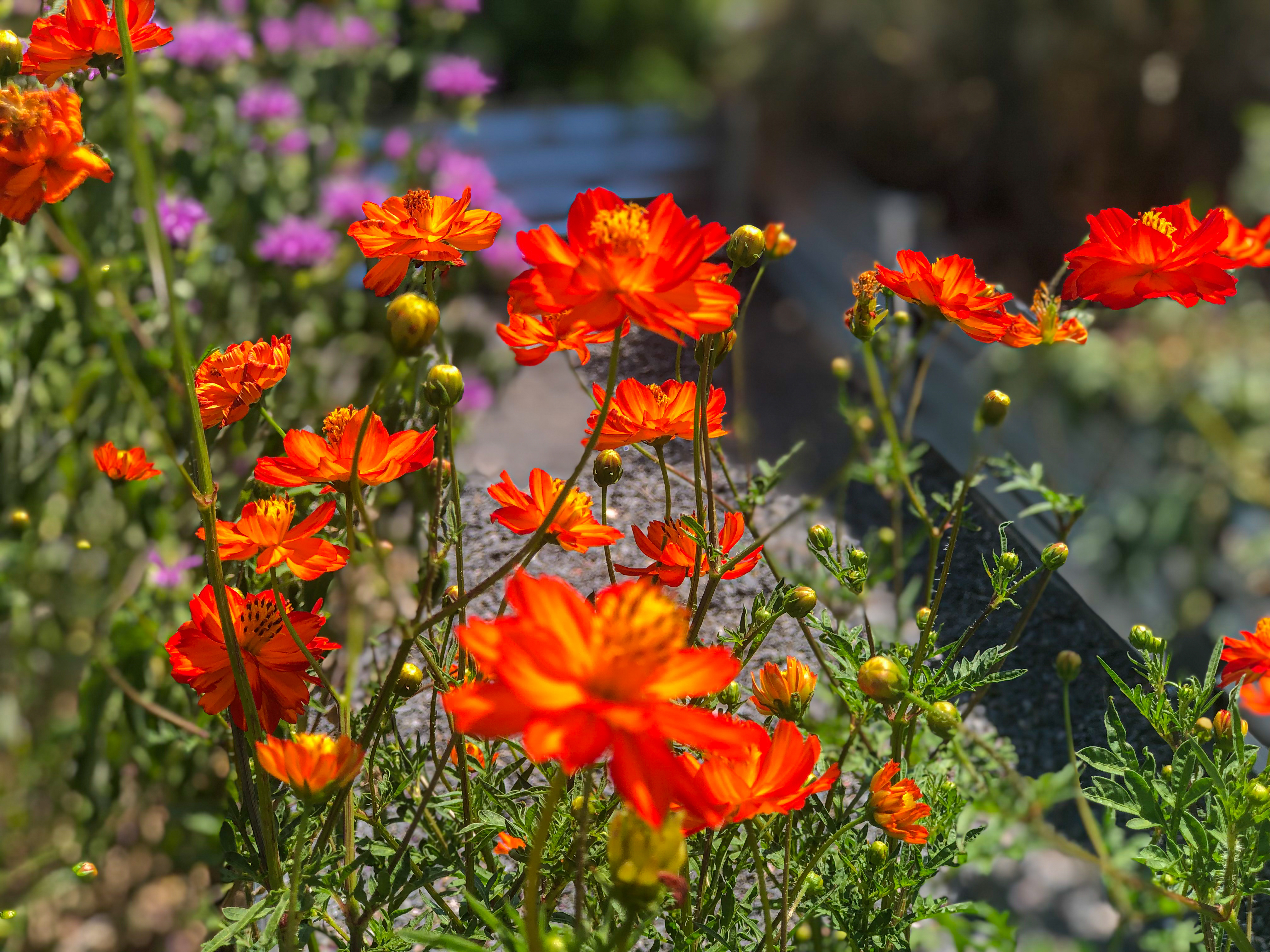
Oranges
Yellow Cosmos | Cosmos sulphureus
Dye color: Deep orangey reds, sunny yellows and tangerine oranges (flowers)
Native to the Americas, cosmos is drought tolerant and easy to grow. The pink or white flowered versions do not yield color.
Rhubarb | Rheum species
Dye color: Ranges from saffron yellow to sherbet orange (leaves and roots)
The stalks taste great, but the heart-shaped leaves are toxic.
Safflower | Carthamus tinctorius
Dye color: Yellows, pinks, orange-reds and corals (flowers)
One of humanity’s oldest domesticated plants — used for oil, dye and medicine. Don’t let the thistle-like appearance fool you, it is part of the same family as sunflowers.
Warm Yellows
Dyer’s Coreopsis | Coreopsis tinctoria
Dye color: Golden yellows, rust to browns (flowers)
A beautiful wildflower of the Great Plains, these drought-tolerant plants are easy to grow and can be found wild in Oklahoma. They are commonly called Golden Tickseed.
Onion | Allium
Dye color: Yellows to warm oranges, brown and khaki greens (dried skins)
The dried skins of yellow onion create warm and sunny colors when used for inks or dyes. Red onions give warm browns and greens — thankfully without the odor!
Dahlia | Dahlia species
Dye color: Yellows, oranges, green, purples and pinks (flowers)
Dahlias aren’t just for cute bouquets — look for the darker flowers, as they have the most dye.
Marigold | Tagetes species
Dye color: Bright yellow, gold, chartreuse (flowers)
Edible flowers that also repel garden pests. The marigold is a ceremonial and sacred flower in many cultures of the Americas. Prolific growers, producing warm, sunny dyes or inks.
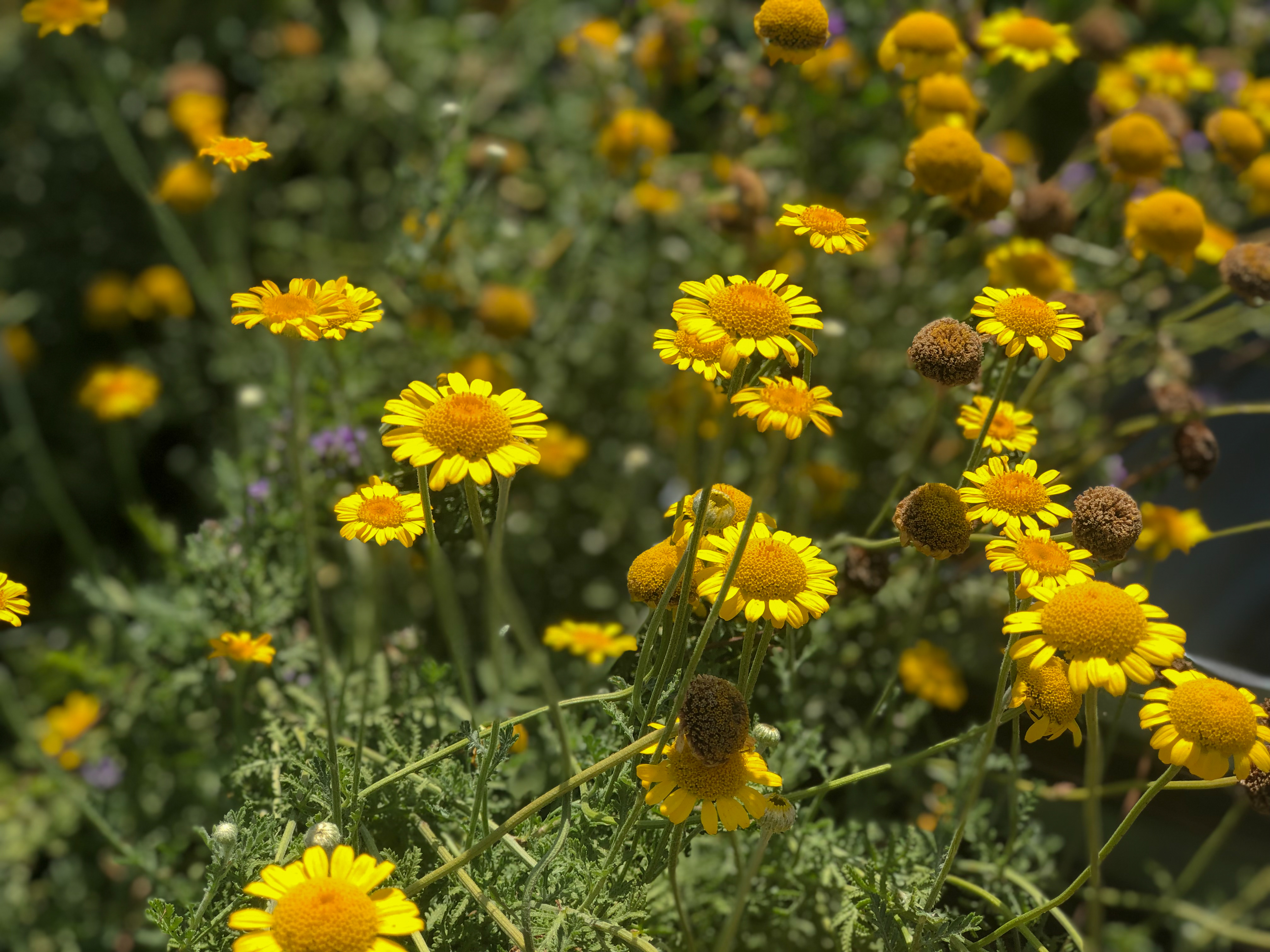
Yarrow | Achillea millefolium
Dye color: Warm ivories and buttery yellows (leaves, flowers, stems)
An ancient dye-plant found locally. Sometimes known as nosebleed plant because of its reputation to slow bleeding. The yellow and red varieties have the strongest dye potential.
Dyers Chamomile | Anthemis tinctoria
Dye color: Buff, yellow and golden orange (flowers and stems)
This evergreen perennial is a member of the sunflower family and should not be used for tea, despite its misleading name.
Cool Yellows
Goldenrod | Solidago species
Dye color: Range of yellows to chartreuse green (stems and flowers)
Goldenrod is commonly blamed for allergies, but did you know the stalk and flower can create cool-toned green dyes? Grab a handful of this native pollinator for your next dyebath.
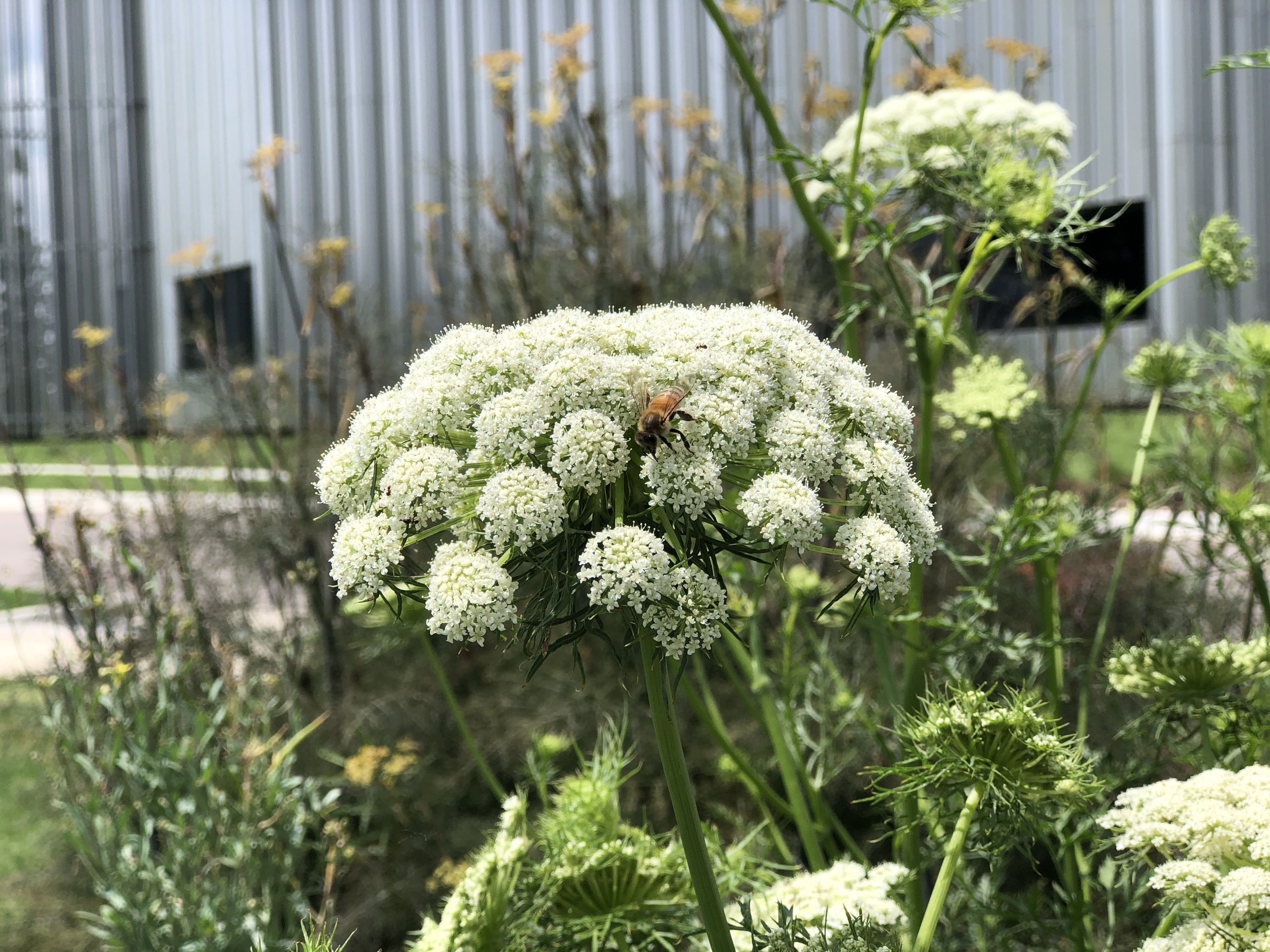
Tansy | Tanacetum vulgare
Dye color: Cool-toned yellows (leaves and flowers)
This poisonous plant has been used medicinally by many cultures. It’s also an insect repellent.
Carrots | Daucus carota
Dye color: Cool yellows (tops) and orange hues (root)
Eat the carrots and use the tops to create a dye that can be turned to olive green with a copper afterbath.
Green
Black-Eyed Susan | Rudbeckia hirta
Dye color: Olive green, brown (flowers), yellow, orange (leaves and stems)
These native wildflowers are packed full of color. When cooking in your dye pot, the liquid will be a red-violet color for the flowers, but it will dye green and smell like violets. Leaves can give you yellow and orange tones.
Fennel | Foeniculum vulgare
Dye color: Sage and buttery yellows (seeds, stems, leaves and flowers)
The pigment is the strongest when fennel is in flower. This plant is part of the carrot family, but tastes like anise. The Greeks and Romans used fennel as medicine, food and insect repellent, and warriors consumed fennel tea for courage.
Comfrey | Symphytum officinale
Dye color: Pale, cool yellows to green
This rapidly growing dye plant is a member of the borage family and has a long medicinal history in Europe and Asia. Also known as “boneset” and “knit bone.” We request you refrain from any use other than dye — this plant is poisonous.
Blue
Indigo | Persicaria tinctoria
Dye color: Blue, aqua, teal, green (leaves)
One of our more challenging dye plants. Japanese Indigo, also known as Dyer’s Knotweed, must be harvested before flowering or the pigment shifts into green tones.
Woad | Isatis tinctoria or Isatis indigotica
Dye color: Blues (seeds and leaves)
Ancient Egyptians dyed cloth wrappings for mummies with this plant, which has been used since the Neolithic era (more than 12,000 years ago). The Picts created body paint from it.
Purples and Pinks
Hollyhock | Alcea rosea
Dye color: Yellow, gold or brown (light-colored flowers), lilac, purples, pink and light reds (dark-colored flowers)
This garden giant, which can grow 6 to 8 feet tall, often won’t bloom much in its first year, but it makes up for it with a variety of flower colors, each giving a different dye. No wonder it has its own festival in Kyoto, Japan!
Hopi Black Dye Sunflower | Helianthus annuus macrocarpus
Dye color: Maroon-red, deep maroon, dark purple, deep lavender and blue-black (seeds and flowers)
The Hopi have traditionally used Hopi Black Dye Sunflower petals and seeds to make dye for cotton, wool and basketry.
Purple Pincushion | Scabiosa
Dye color: Purples, pinks, gray-blue and green (flowers)
This pollinator is best known as butterfly weed. We are fans of Scabiosa atropurpurea for its stunning purple dyes.
Red Cabbage | Brassica oleracea
Dye color: Pink, purple and blue
Looking for a fun science experiment with pigments? Red Cabbage is extremely sensitive to pH alterations and will shift from purple to blue hues.
Beets | Beta vulgaris
Dye color: Pinks, red-purples (root)
Beautiful dyes, easy to grow and edible greens — what more can you ask for in a dye plant?

Hopi Red Dye Amaranth | Amaranthus cruentus x powellii
Dye color: Purples and pinks (feathery tops and leaves)
Originally grown as a dye plant by the southwestern Hopi Nation to make their piki bread. This variety has the reddest seedlings of any amaranth known and all parts are edible!
Bee Balm | Monarda
Dye color: Pink (flowers)
This wildflower is related to mint and loved by pollinators — look for deep pinks or reds for the most pigment.
Alkanet | Alkanna tinctoria
Dye color: Red-purples to purple-blue (roots and flowers)
Part of the borage family, the roots of this plant have historically been used to create a purple color in textiles and soap.
Bachelor’s Buttons | Centaurea cyanus
Dye color: Blue (flowers)
Also known as cornflowers, this plant can be found growing throughout the U.S. but don’t be fooled! It is labeled as invasive and noxious in some states, including such Tennessee, Georgia, Maryland and North Carolina, and is gradually invading the prairie lands of the northwestern U.S.
Elderberry | Sambucus
Dye color: Pink, lavender, purple (berries)
The dark-purple berries on this plant are medicinal, great for dye and tasty in a pie or jam. The leaves will create a yellow or green dye, while the bark produces a gray dye.









